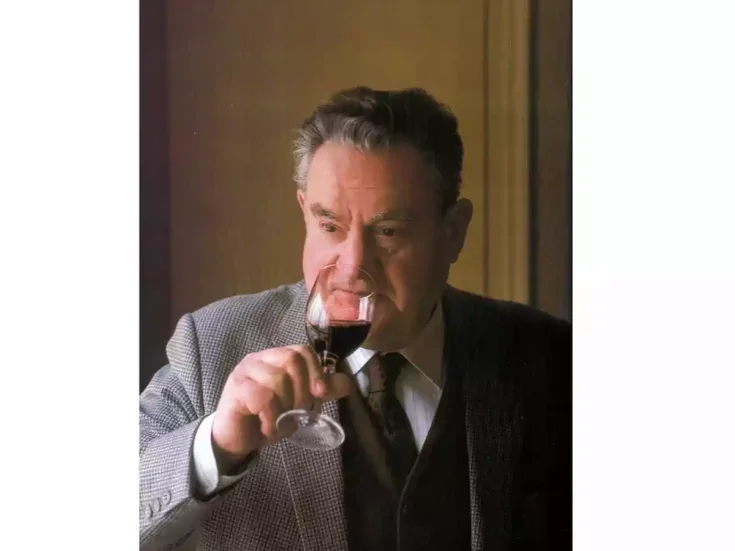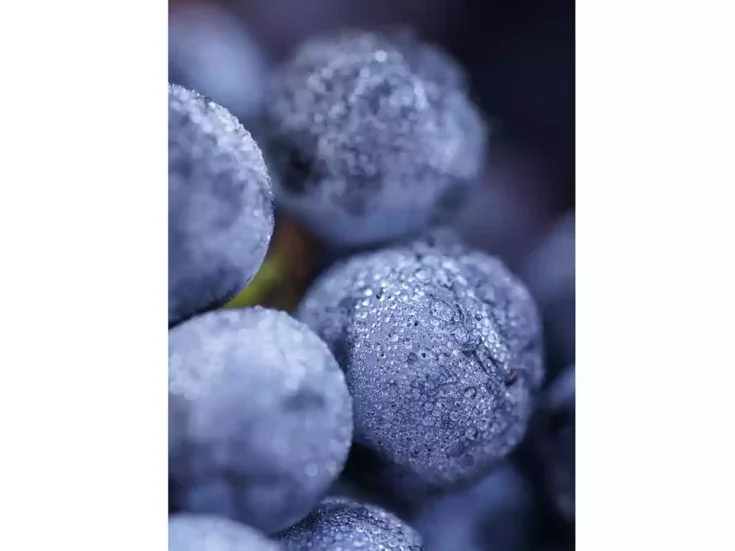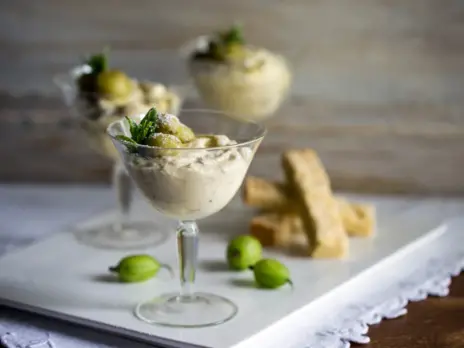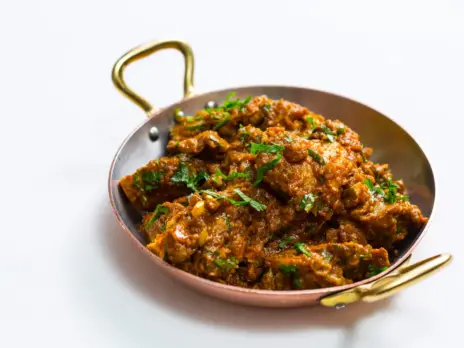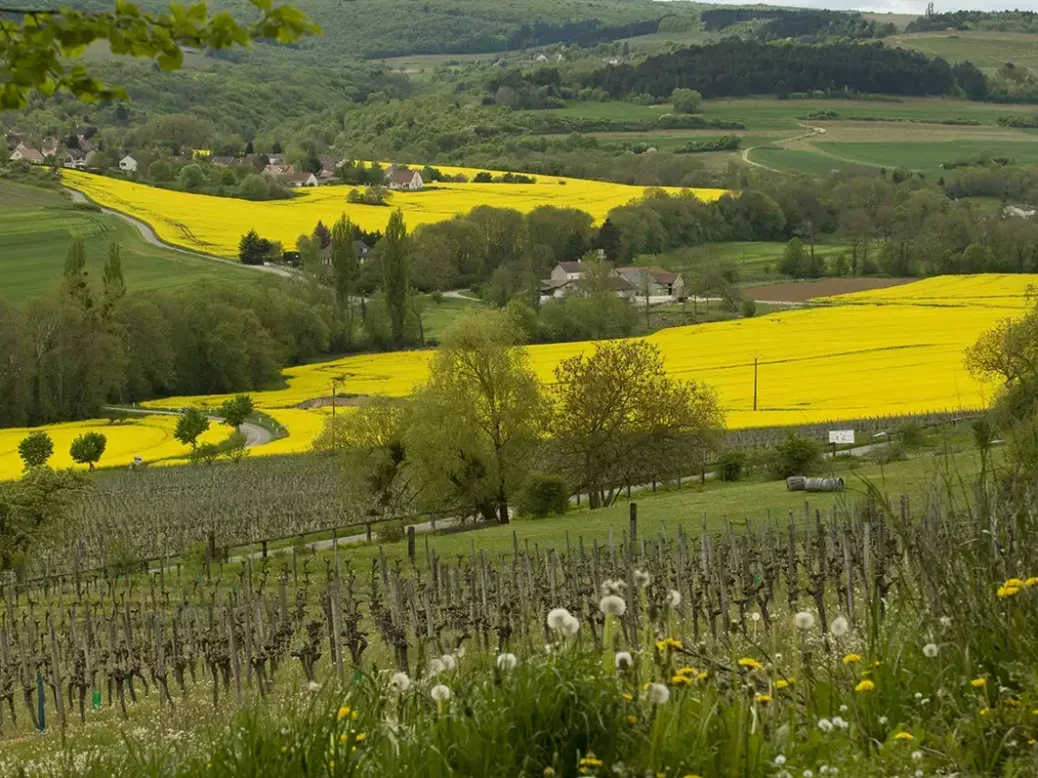
With climate change making the area increasingly attractive for Côte d’Or growers, but with wine prices still keen, Bourgogne Hautes-Côtes has never been more popular.
These days, nobody scoffs at wine from Bourgogne Hautes-Côtes. On the contrary, over the past decade or so, its popularity and profile have risen higher than anyone could have foreseen, albeit that many astute producers in the Côte d’Or took a punt and bought land there when it was dirt-cheap in the 1990s. Two significant factors are responsible for the Hautes-Côtes’s current popularity: the warmer growing seasons due to climate change, which enable fruit to ripen fully more often than not, and the overinflated prices of many wines from the Côte d’Or. Put this together with improvements in viticulture and winemaking over the past two decades—and, for that matter, older vines—and you have a winning formula.
Casting my eye along the Hautes-Côtes, I was spoiled for choice as to which domaines I might visit. I plumped for Thevenot-Le Brun & Fils, Henri Naudin-Ferrand, and Boris Champy, to which I added visits to many more producers based on the Côte d’Or—some with Hautes-Côtes vineyards owned for generations, others with land snaffled more recently. There are no flies on Michel Gros’s family in Vosne-Romanée, who had the foresight to start accruing land near Chaux in the 1970s; while Johnny-come-lately types include Domaine Leflaive, which purchased and planted 4ha (10 acres) in Nantoux on the Hautes-Côtes de Beaune in 2021. Domaine Cathiard has even built a new cellar to vinify the heightened production from its 2021 acquisition. Many others, Maison Edouard Delaunay included, lease vineyards or purchase fruit.
I wanted to know more about managing a vineyard on the Hautes-Côtes and the effect of climate change on the vines and wines: What motivates the new wave of producers, and what lies behind the 20th-century Hautes-Côtes gold rush? Tasting Hautes-Côtes wines along the way, I would immerse myself in the diversity of the terroir and pass along the intel.
Hautes-Côtes: A long history
But first a little history, courtesy of Nicolas Thevenot and Laurent Delaunay. Before Edouard Delaunay sold its business to Boisset in 1993, its 30ha (75 acres) of vineyard included a little Hautes-Côtes de Nuits. “I was a great fan and convinced by the Hautes-Côtes from the early 1990s,” remarks Laurent Delaunay, who was secretary of the appellation’s growers syndicate at the time.
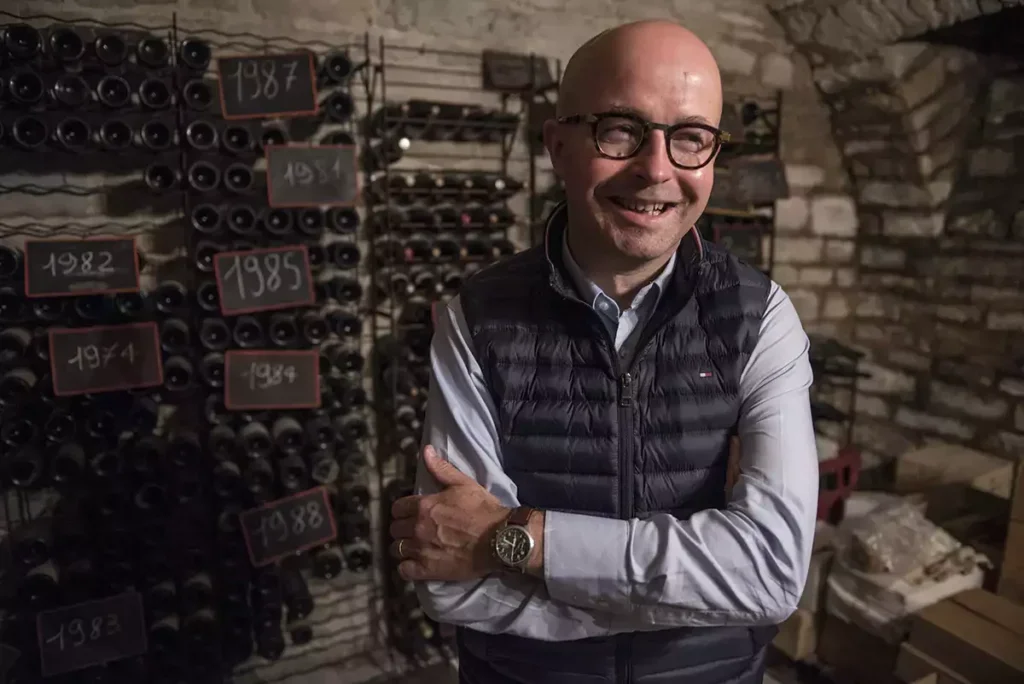
He tells me that viticulture started in the Hautes-Côtes at the same time as the Côte d’Or, so around the 2nd century ce, supported by documentary evidence from the 8th century pertaining to donations of vineyards to local abbeys. “By the early Middle Ages, they recognized the quality of the wine. Some were classified Vin du Clos, the highest category reserved for the nobility and the religious elite. A wine from Meloisey was served to celebrate the accession to the throne of Philip Augustus in 1179.” Laurent describes this period until the 14th century as “the medieval climatic optimum,” which accounts for quality of the wine at the time. This declined during the mini-ice age that lasted until the 19th century, when—particularly in the 17th and 18th centuries—it was too cold for quality production.
By the 19th century, before phylloxera, the Hautes-Côtes was planted almost entirely to Gamay, “for climatic and economic reasons, to make everyday wines,” continues Laurent. The Côte d’Or, which was covered with a startling 33,000ha (81,500 acres) of vines—largely Gamay, 85% in Clos St-Jacques, for example, and more than half of Pommard—was the recipient of much of this wine. Laurent has calculated that to supply wine to the total population of vineyard workers in the area of the Côte d’Or, where four people per hectare (2.47 acres) were needed to work the tightly planted vines, would have required some 730,000hl a year. This could only have been met with low-end wine from the Hautes-Côtes, probably at around 8% ABV, assuming it was also diluted with 50% water.
“After phylloxera, the Hautes-Côtes was replanted with Gamay, probably 95%, which was a strategic mistake,” continues Laurent. The very local market for everyday wine, which had expanded using the canal system, increased rapidly with the railways, at which point the Hautes-Côtes lost out to cheaper wine from the South of France and Algeria (during World War I, the army looked to Algeria to supply troops, too). The Hautes-Côtes declined, as there was no market for their wine, which was relatively more expensive.
“By 1925, some people realized the mistake of planting Gamay and began to replant other varieties.” As early as 1928, a 30-page dossier promoted the idea of an area called the Hautes-Côtes. “In 1935, however, the legislation restricted the varieties that could be used for regional wine, to Pinot Noir and Chardonnay, so the area planted to Gamay lost even its regional appellation. This and the economic crisis in the 1930s accelerated the decline. It took another 30 years for the Hautes-Côtes to get organized.”
At Domaine Thevenot-Le Brun, fourth-generation Nicolas Thevenot, current president of the syndicate of growers on the Hautes-Côtes, picks up the story. “At this time, the region was called the ‘Arrière Côte’—nothing to do with wine and a disaster on the label,” remarks Nicolas. When his grandparents, Maurice and Anne-Marie Thevenot, established a home in the Hautes-Côtes in the village of Marey-lès-Fussey in the 1960s, it was typical for small landholders in the surrounding villages to grow various arable crops and soft fruit as well as vines, since the former were a significant part of the economy. “Still in the ’50s, and right through to the ’90s, there was lots of red fruit—currants and raspberries—while at the same time vines were being replanted on the land abandoned after phylloxera. My grandparents planted vines but in the ’90s still had 10ha [25 acres] of blackcurrants, which they sold to cassis producers.”
The history of wine on Thevenot’s estate, however, goes back much further. In the 12th century, the abbesses of the Abbey du Lieu Dieu produced wine from a 7ha (17-acre) south-southeast-facing vineyard. “They left during the French Revolution, and the vineyard was abandoned after phylloxera,” Nicolas tells me. His great-grandfather bought this land in the 1930s, cleared the trees to graze cattle until the 1960s, when he began to dream of a vineyard again, which he began planting in 1973. I went to have a look at this vineyard, which is protected from the north wind by woodland and has a very thin topsoil with the usual calcareous clays. “The vineyard is chalky and very rocky. Chardonnay [1.5ha (3.7 acres)] is planted where the clays are white-yellow. Pinot Noir is planted on the section with redder clays.” The Pinot Noir from this vineyard—Clos du Vignon—has silky tannins, while I particularly liked the Chardonnay for its sapidity and tension.
But to return to the history, Nicolas continues: “The movement for an Hautes-Côtes appellation began in Orches, when a number of growers formed a cooperative.” Claire Naudin tells me her grandfather was among those involved in the application to upgrade the territory. Finally, on August 4, 1961, the Bourgogne Hautes-Côtes de Beaune and Bourgogne Hautes-Côtes de Nuits denominations were officially ratified. The former covers 27 villages between Les Maranges and Magny-lès-Villiers, while the latter encompasses 20 villages between Magny-lès-Villers and Reulle-Vergy.
The Hautes-Côtes de Nuits can broadly be described as a Jurassic limestone plateau with gentle undulating hills, where the vineyards are planted on slight slopes with very thin soils just off the Côte, above Vosne-Romanée, for example, but with as much as one meter (1 yard) of topsoil in villages farther west, according to Pierre Gros. On the Hautes-Côtes de Beaune, the soil is more mixed, and the marls are of Bajocian origin. The valleys are more likely to run perpendicular to the Côtes, with some vineyards located on steep slopes with limestone scree—for example, Phillipe le Hardi’s Les Foires vineyard by St-Aubin.
Jean-Philippe Archambaud—who is managing director and winemaker at Philippe le Hardi, as well as at his own domaine in Vosne-Romanée—is among the few people producing Bourgogne on both Hautes-Côtes and contrasts the two. “The vineyards of the Hautes-Côtes de Beaune are located at the foot of the limestone cliff on the sunny slopes of a ribbon of valleys perpendicular to the Côte de Beaune,” he says, while “the vines of Bourgogne Hautes-Côtes de Nuits grow on the south- and southeast-facing slopes of valleys cut into the Jurassic limestone plateau at between 290 and 485m [950–2,000ft] above sea level, 100–200m [330–660ft] higher than the Côte de Beaune, which results in slightly later maturing and harvesting—on average, around one week later. The soil is made up of formations laid down 80 million years ago during the Trias (sandstone and clay) and the Jurassic (marl and limestone). The underlying rock is the same as that of the Côte, but the topsoil is thin or nonexistent.”
In typical Burgundian fashion, however, nothing is straightforward. In this case, it is the strange division of the Hautes-Côtes de Beaune. The main section runs from Bouze-lès-Beaune and Nantoux, down to the Maranges, but there is a smaller, quite separate northern part adjacent to the Hautes-Côtes de Nuits, with which it shares a similar terroir profile. Domaine Henri Naudin-Ferrand is based in Magny-lès-Villers, which sits astride the dividing line between the Hautes-Côtes de Beaune and the Hautes-Côtes de Nuits. Claire Naudin, whose wines are made with minimum intervention and low sulfur, have done much to raise the profile of the appellation, comments, “There is a combe stretching from Ladoix to Magny. The delimitation was continued by using the road to Echevronne. It’s an administrative divide.” One side looks to Nuits (for services including the police) and the other to Beaune (for schools). She says, “The geology was considered, but it’s not precise.”
One would suppose the difference in the terroir between the two sections of Hautes-Côtes de Beaune to be quite marked, but surprisingly Laurent Delaunay believes “there is no major geological distinction between either side of the Hautes-Côtes.” Latitude, he asserts, is of much greater significance.
Reulle-Vergy, where Laurent’s home and winery is located, is the most northerly village of the Hautes-Côtes on pretty much the same latitude as Chambolle-Musigny. “When the classification was made in the ’60s, the effect of latitude was considered more important than altitude.” Laurent tells me, “Farther north than Reulle-Vergy was considered too cold, but over the past 30 years, the temperature in Burgundy has increased by 1.5°C [2.7°F], making the temperature on the Hautes-Côtes today what it was in the Côte d’Or 20 or 30 years ago.” Claire Naudin agrees it has increased “by 1.5, maybe 2 degrees [2.7–3.6°F].”
Given that 99% of the Côte d’Or is already planted, Laurent argues that the best option for those who want to expand their domaines is the Hautes-Côtes, “where we have similar soil and latitude.” The changing climate has made cultivating vineyards for quality fruit at this altitude not just feasible, but maybe more desirable than the alternatives. “Going north, there is more planting in the Yvonne, but the terroir is not the same,” he remarks. Much closer to home, he mentions the area of Bourgogne southwest of Dijon, likely to be given a regional designation to become Bourgogne Dijon in the near future—but here, there is only 50–60ha (125–150 acres) of land.
Meanwhile, there is a total of 4,748ha (11,730 acres) designated as Bourgogne Hautes-Côtes, of which only 2,296ha (5,675 acres) are currently planted. 1,761ha (4,350 acres) are used for Hautes-Côtes, while the balance is planted with unauthorized varieties such as Gamay or used for crémant. This leaves about 50% that is unplanted.
To put this in historical perspective, in 1914 a similar area was planted, 2,728ha (6,740 acres), which diminished to just 900ha (2,225 acres) by 1955. The upsurge of planting occurred 20 years ago. Just 258ha (638 acres) have been planted since 2010. Of the 4,748ha (11,730 acres), only 398 (984 acres) are planted to white varieties. There is a little more Hautes-Côtes de Beaune (978ha [2,417 acres]) than Hautes-Côtes de Nuits (783ha [1,935 acres]).
“There are many new plantations in the Hautes-Côtes,” says Nicolas Thevenot, “which are a subject of much discussion. We want to keep a diverse landscape, with forests and protection for the wildlife, particularly the specials birds that live here.” Laurent Delaunay mentions current projects to identify areas in which to concentrate planting and “how we should expand in respect with the environment.”
The Hautes-Côtes wine appellation overlaps with the Arrière Côte de Dijon et de Beaune, an ecosystem that is protected within the nature reserve Natura 2000. This is habitat to the great horned owl and short-toed snake eagle, erstwhile known as the Burgundian eagle. The timing of planting or removing vineyards and clearing woodland is restricted to the period after fledglings leave the nest in August. Maybe not everyone complies. Claire Naudin claims that a large tract of forest was cleared outside the permitted season, clandestinely, during the night near her village.
Boris Champy, located in Nantoux on the Hautes-Côtes de Beaune, remarks, “Our vineyards are located alongside the Arrière Côte de Dijon et de Beaune. We consider this a stroke of good luck, a guarantee that we will remain within a natural environment with a protected ecosystem.” He goes on to explain that it is easier to work biodynamically on the Hautes-Côtes than on the Côte d’Or, because the viticulture is less intensive, and the parcels are larger. “We have great biodiversity, scree slopes, hedges, orchards, grasslands, with numerous orchids and even a few corm trees.”
Managing vineyards on the Hautes-Côtes
As a rule of thumb, with every 100m (330ft) increase in altitude, the temperature falls by 1°C (1.8°F), though according to the Bureau Interprofessionnel des Vins de Bourgogne (BIVB) the highest vineyards on the Hautes-Côtes de Nuits (in a few places reaching 480m [1,575ft]) are 5°C (9°F) cooler than the Côte de Nuits. The lower temperatures were a challenge in the past, particularly with the risk of frost, but also in the fruit profile, since it was difficult to achieve sufficient phenolic ripeness and sugar.
Many producers mentioned that the likelihood of frost has receded, but it is not risk-free. Nicolas Thevenot recalls, “My father said frost was a big issue in the ’70s and ’80s, but then we had a big frost in 2016 and lost 75% of our crop, and the hail in 2018 was the worst he ever saw.” As Claire Naudin observes, “Climate change has brought more extreme conditions.”
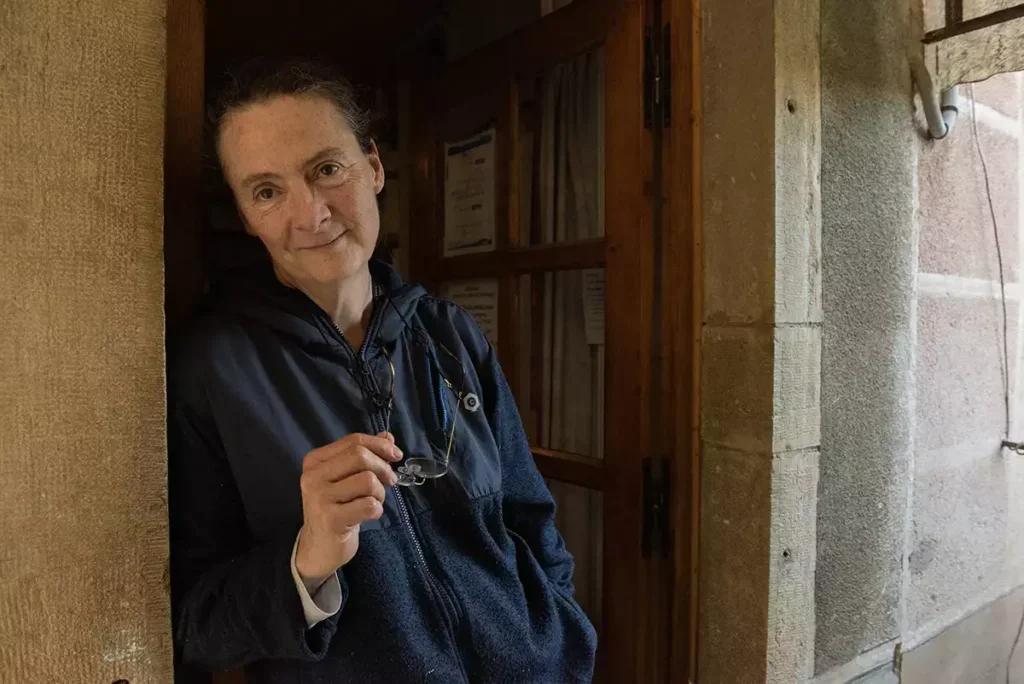
At Domaine Michel Gros in Vosne-Romanée, Pierre Gros considers that their vineyards on the Hautes-Côtes de Nuits have fewer risks from frost, extreme seasons, and disease. “The frost was less of an issue in 2016 on the Hautes-Côtes than on the Cote d’Or, and there was none there in 2021. The vines are less sensitive to frost because the budding is between seven and ten days later on the Hautes-Côtes de Nuits.” He adds, “Most producers on this part of the Hautes-Côtes have vines on slopes and never at the bottom of a valley, where the frost collects.”
Claire Naudin of Domaine Henri Naudin-Ferrand also believes that her vineyards are well adapted to the altitude. I met Claire at 6pm on a June evening, when she rather reluctantly left the vineyard to speak with me. Claire is devoted to her vines, so these precious hours were not to be frittered away on idle chit-chat. “I don’t talk to journalists or read wine magazines,” was her opening gambit. With a little coaxing, however, she seemed happy to explain how she manages the conditions in her Hautes-Côtes vineyards with a higher fruiting zone, pruning twice and plowing later.
Most vines are trained on vertical shoot positioning in the Hautes-Côtes. There was a trend for lyre trellising, but Claire tells me that it didn’t work, because the tendrils got entwined in the V-shaped canopy. Many seem to have tried lyre, only to abandon it subsequently. Nicolas Thevenot remarks, “My father tried lyre, but found that when the vegetation grew fast, it was difficult to manage, and it was better to use vertical shoot positioning, even though the yields are lower.” Anne-Laure Chartron found that “lyre was useful ten years ago, to keep maximum sun for the photosynthesis, but not now.” These days, the only lyre-trained vineyard of which I am aware lies on the periphery of Auxey-Duresses.
As for the planting, spacing is generally wide (regulations state a minimum of 3m [10ft] between the rows), with a density between 4,000 and 5,000 vines per hectare, and the permitted yields are 60hl/ha for red, 66hl/ha for white. Notwithstanding the advantages of wider spacing for aeration, some have a density of 8,000 or even 10,000 vines/ha.
Caroline Lestimé (of Domaine Jean-Noël-Gagnard in Chassagne-Montrachet) planted her Hautes-Côtes adjacent to St-Aubin with 8,000 vines/ha. The original parcel was owned by her great-grandmother, who sold the grapes to a mousseux producer. Following in her footsteps, Caroline began her Hautes-Côtes venture in 2004, with a crémant made from Pinot Noir. She is not convinced that 8,000 vines/ha was a good idea, remarking that the fruiting zone is close to the soil and vulnerable to mildew. Sébastien Magnien, however, is confident that 10,000 vines/ha in Meloisey was the right decision for Pinot Noir and Chardonnay, though he pulled out the Gamay that his father planted. “We do all the same work in all our vineyards, and it’s not financially viable to make Gamay this way.”
Pierre Gros finds fewer issues of hydric stress and disease with wide rows and higher canopies. “There is more air flow through the vineyards. The vines are also less susceptible to extreme vintages—hot or cold.” The thick level of clay over the limestone prevents hydric stress, while a cover crop of grass between the rows makes it easier to access the vineyard with the tractor and avoids compacting the soil.
Pierre’s grandfather bought land in the Hautes-Côtes near between Chevrey and Marey-lès-Fussey in the 1970s and ’80s. Michel Gros expanded in the 1990s and 2000s, planting the new land with different clones of Pinot Noir. In the lieu-dit Au Vallon, he planted clone 777 in 2000/01, then the ATVB massal selection in 2009, 2012, and 2014. He has found that these clones ripen earlier than the previous generation of clones, which was certainly useful when the climate was cooler—but still now, 2024 being a case in point.
As for rootstock, older vineyards are likely to be grafted on SO4, but many producers I spoke with are experimenting when planting or replanting. Pierre Gros is trialing 110R and 5C. Nicolas Thevenot observes, “On our thin and porous soils, 5C and 3309 are better than Paulsen. At each planting, we use at least three rootstocks.”
There is little doubt that better vine material has contributed to more consistent and greater ripeness, but climate is the decisive factor. Take the 2021 vintage, for example, which had a difficult cooler season. In a tasting of 2021 Hautes-Côtes, I found the reds tough-going. Even in warmer seasons, not all goes to plan for everyone. In 2023, Claire Naudin was unhappy with the tannin of some of her Hautes-Côtes de Nuits red and blended it with some 2022 to make a Non-Vintage wine.
Most producers agree that the date of harvesting tends to be earlier nowadays. There used to be at least a two-week hiatus between finishing the harvest on the Côte d’Or and starting on the Hautes-Côtes, but now most producers move directly from one to the other. Thibault Liger-Belair even harvested Le Clos du Prieuré, a parcel located on a warm, south-facing slope with a gradient of 40%, in the middle of the harvest, which illustrates the scale of change. “The workers need sunglasses in the vines in the summer, as the soil, which is glaringly white, reflects the light. We always get good maturity here.” (The 2023 Le Clos du Prieuré is compact, rich, and spicy.) Thibault adds, “It’s no longer the case now that if you go up 100m [330ft] in altitude, you need to wait a week to harvest. The biggest thing now is the aspect, and Le Clos du Prieuré is south-facing. La Roche in Bevy is the last to ripen.” This vineyard is located at 400m (1,300ft) on cailles and limestone. “It is softly air conditioned by the surrounding wood, which lets it breathe and the temperate is regulated. There is never an issue of overripeness here.”
It’s no surprise that many domaines based on the Hautes-Côtes harvest their white grapes by machine, since this helps them hit a certain price/quality ratio. But machine-harvesting Pinot Noir is a different matter. Claire Naudin uses a machine but hand-picks the whole bunches of Pinot Noir she requires. She also points out that it’s difficult to get pickers late in the season. “We might start on August 20 in the Côte d’Or and finish in the Hautes-Côtes in mid-October in dry vintages like 2020 or 2022, when the drought delayed ripening. We had four groups of pickers. We can start with students but finish with retirees.”
I was not surprised, however, that Nicolas Thevenot and his sister are considering harvesting the rather special Clos du Vignon by hand: “We know we must hand-harvest to take it to the next level.” Pierre Gros hand-picks everything, drawing attention to the fact that for producers with Hautes-Côtes vineyards at a distance, it’s important to harvest by hand so there is no oxidation in the trailer en route back to the winery.
So, now the fruit has arrived at the winery and can be analyzed, what effect does the Hautes-Côtes have by comparison with the Côte d’Or? In 2023, the marginally cooler temperature gave valuable time to ripen the large crop. This was particularly significant for Pinot Noir, which could reach phenolic maturity without sugar levels rising, and acidity levels falling, as rapidly as they did on the Côte d’Or. While red wines can suffer from overripeness in 2023, the Hautes-Côtes has often turned out fresher Pinot Noir with more red fruit and nicely ripened tannin.
Many producers on the Côte d’Or tweaked the acidity in 2023, but this was unnecessary in the Hautes-Côtes. Pierre Gros acidified his Côte d’Or cuvées in 2023, but not his Hautes-Côtes wines. He comments on the changes in the analysis: “The maturity is better and better. It was medium to low previously but is ripe now, though to some extent there is still some difference in sugar and acidity between the Hautes-Côtes and the Côte. On average, Hautes-Côtes wines have alcohol levels 0.4% lower than those from the Côte, the former now typically 12.5% or even 13% in very ripe vintages. Over the past ten years, they are almost ripe enough never to use the concentrator—until the 2024 vintage. But the acidity is always higher. The pHs are 0.1 to 0.15 lower than on the Côte, and that’s a big difference.”
Thibault Marion, who has been making red Hautes-Côtes de Beaune with purchased fruit from Nolay for ten years, remarks, “We find more consistency generally, and in vintages like 2023, the wine retains good balance.” The final pH in his bright and crunchy wine is 3.47, which is not bad for 2023.
At Domaine de l’Arlot, Géraldine Godot, who makes Hautes-Côtes Le Mont from just above the premier cru vineyards, says, “We speak a lot about climate change. Twenty years ago, the Hautes-Côtes wines were less ripe and more acidic, but now we have good ripeness. It is the first appellation where we have something positive to say about climate change.”
And that fresh acidity can be a very useful blending component. At Domaine Michel Prunier & Fille, Estelle Prunier blends Chardonnay from a 2ha (5-acre), 40-year-old vineyard planted by her father on the plateau above the west side of Auxey-Duresses. It is added to Chardonnay from a parcel of Bourgogne below Meursault. It’s a good strategy in a warm vintage such as 2023, and Ben Leroux did the same in 2023, adding 8% of Hautes-Côtes from above St-Aubin to his Bourgogne, which also comes from the plain below Meursault. Incidentally, it’s worth looking out for Jean-Philippe Fichet’s vibrant Hautes-Côtes de Beaune made from vines neighboring Estelle’s above Auxey-Duresses.
As Nicolas Thevenot reflects, “We have different concerns from those our parents had. Fifteen years ago, they were looking for more sugar and the acidity was never too low. Nor was the temperature of the juice ever too high. In the ’70s and ’80s, the fruit needed chaptalizing. Now, the sugar concentration is much higher and Chardonnay pHs can reach 3.5. Over the past two years, the pHs have become our main preoccupation, and we must cool the tanks.

“In 2018 the specific density of Pinot Beurot was 1.098. This was a record at the time, but it was beaten in 2022. For six or seven years now, a density of 1.098 has been commonplace, whereas it used to be exceptional. I feel there was a big change from 2017 to 2018.”
I should mention that Hautes-Côtes regulations permit the inclusion of up to 30% of Pinot Beurot, while Chardonnay and Pinot Blanc may represent 100%. Both Thevenot and Naudin have a single varietal Pinot Blanc.
“The Hautes-Côtes terroir is particularly suited to Pinot Beurot. It fully expresses its powerful aromas while maintaining good finesse,” says Nicolas, whose grandfather planted a few rows of Pinot Beurot in the ’70s to blend with Chardonnay. “He was one of the first to plant Chardonnay in Marey-lès-Fussey, but he didn’t know if it would ripen, so he was advised to plant some Pinot Beurot, too, as it ripens faster than Chardonnay.” Pinot Beurot, which is planted on three plots facing due south in Marey-lès-Fussey, is the first grape variety Thevenot harvests.
Nicolas tells me that even in the Hautes-Côtes, certain sites are becoming too warm for Pinot Beurot due to the changing climate. Although Thevenot grow Pinot Beurot on a Hautes-Côtes site, it’s labeled Coteaux Bourguignon because it’s 100% Pinot Beurot. Naturally, the sites classified Hautes-Côtes in 1961 were those with appropriate soil and warmer aspects, while cooler slopes and less good areas are designated Coteaux Bourguignons. “In 2023, the Pinot Beurot reached 13.5% ABV. At this alcohol level, it can be heavy, so now we will plant some on a cooler, north-facing slope.”
So, maybe the climate has become a little too warm for Burgundy’s Pinot Gris… But that aside, Anne-Laure Chartron, who is in charge of Charton’s vineyards, including a parcel in Nantoux, expresses the general opinion of the producers with whom I spoke: “The reds were complicated in the past, but now they are crisp and fresh, and I like them. The whites were always easier, with plenty of acidity.” Jean-Michel Chartron adds, “It enables us to have the freshness we had in the past on the Côte. In the lower areas of Puligny, the quality of the terroir is there, but we have to be really careful not to harvest too late if we want to achieve balanced fruit. When Chardonnay ripens, it does so very quickly, while in the Hautes-Côtes we have a longer, more stable period of peak ripeness.”
Chartron leases Pinot Noir in Sous La Roche in Nantoux. The ripeness and texture of tannin is impressive in the 2023, very silky and rich—among the best Hautes-Côtes I tasted. It is a shame, I think, that they are replacing it with Chardonnay.
Terroir-driven single vineyards
Nantoux is gaining a reputation for quality, terroir-driven single vineyards. No doubt the presence of Leflaive will attract more attention, but it was Didier Montchovet, a pioneer of organic and biodynamic viticulture, who initiated the rise to prominence of this Hautes-Côtes village in the 1980s. The talented Boris Champy, who bought Montchovet’s vineyards, has continued on the same path with a focus on terroir and biodynamics. His Clos 377 is a snappy, bright, and saline Pinot Noir from the lieu-dit Au Clou, situated at 377m (1,237ft) on marly clay. “Our ambition is for this terroir to be recognized as the best-known climat in the Hautes-Côtes de Beaune,” declares Boris.
On the subject of single vineyards in the Hautes-Côtes, Laurent Delaunay remarks, “We have three terroir-led wines, in addition to two blends, to show it’s possible to have single-vineyard wines. This is not a well-developed concept on the Hautes-Côtes, because the focus was more ordinary wine.” His most widely known single-vineyard wine is Les Dames-Huguettes, which is a very attractive wine. Several other producers, among them Boisset and Domaine Cathiard, now use the lieu-dit on their labels. Dames-Huguettes is a large, 50ha (125-acre) parcel in multiple ownership, situated at 350–400m (1,150–1,300ft) on a slight, southeast-facing slope of Argovian marl. It lies above the southern premier cru vineyards of Nuits-St-Georges, where the land flattens out at the top of the slope. Laurent receives grapes from 2.4ha (6 acres) but tells me that only a small part is bottled under the Les Dames-Huguettes label. It’s taking time to establish a sufficient following, and so, for now, most goes into a less expensive Hautes-Côtes red blend.
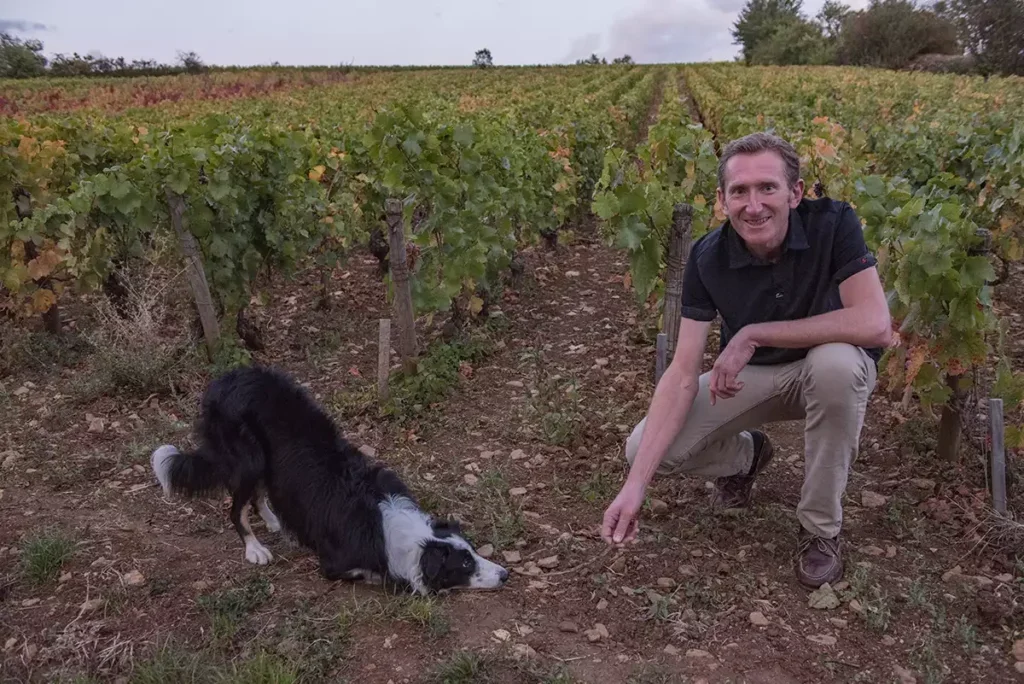
But it is a comparison of Edouard Delaunay’s two single-vineyard white wines that clearly illustrates the diversity of Hautes-Côtes de Nuits terroir. Le Mont lies above Clos de Fôret in Prémeaux-Prissey at 350m (1,150ft) on an east-facing slope with a limestone soil—we are near the Comblanchien quarries. This makes a richer, fuller bodied style than Les Lares—a citrusy, straight, and energetic Chardonnay. The latter comes from a west-southwest-facing slope in Curtil-Vergy. Given the northerly latitude, the 400m (1,300ft) altitude, and the exposure, there is more acidity and freshness in Les Lares. There’s no denying the contrast between the two.
It’s worth remarking upon the location of these two vineyards within the broader context of the Hautes-Côtes. On one hand, we have those vineyards close to the Côte, such as Le Mont, some even adjoining the Côte d’Or vineyards, while others are also relatively near the Côte, covering the ground as it flattens above the slope. On the other hand, we have Hautes-Côtes from the undulating plateau—the heartland of the Hautes-Côtes, which is punctuated by small hills and scattered with villages such as Curtil-Vergy.
Domaine de l’Arlot also has a single hectare (2.47 acres) in Le Mont, where the top two thirds are planted to Chardonnay. In 2023, this has a generous and peachy mid-palate, but is crisp and savory to finish, while the Pinot Noir is red-cherry-juicy and crunchy, to boot. I always like both of Arlot’s Hautes-Côtes. So again I think it’s a shame that the Pinot Noir has just recently been grubbed up to plant more Chardonnay.
Jean-Philippe Archambaud (JJ Archambaud) is among several producers in Vosne-Romanée with land on the Hautes-Côtes just above the village in the lieu-dit Aux Défois (or Au Défoi), where he describes the soil as “limestone and clay, very rich in iron.” I tried a vertical from 2018 to 2023, a run of hot vintages, with the exception of 2021, in which the texture was consistently smooth, but even with climate change, there is a cool, herbaceous, stemmy twang. All were 12.5% ABV.
Anne Gros calls her white Hautes-Côtes de Nuits “Cuvée Marine,” which alludes to the fossils in the soil of the limestone plateau above Vosne-Romanée. I’ve aways rather liked this wine. Also making white from the plateau, Gros Frère et Soeur produce a smooth-stone, savory, and almondy Hautes-Côtes Blanc, also well worth seeking out.
The other Gros family—Michel and his son Pierre—has vineyards in the heartland of the Hautes-Côtes de Nuits. The lieu-dit Au Vallon faces southwest and makes a pretty, single-vineyard red wine. But the Fontaine St Martin (monopole) is even more interesting. Over the past 20 years, I have reviewed and sometimes bought wine from this east-facing vineyard, just east of Chevrey. In warm years, the red is fruity, crunchy, and fresh; it is leaner in classic seasons, but recently the attractive expression of this vineyard has become increasingly reliable. The geologist Françoise Vannier has conducted studies that reveal that the hill on which Fontaine St Martin lies is comparable with the hill of Corton—Oxfordian limestone, from the upper Jurassic period, in similar strata and with a similar profile of marns. These layers are thin and fine-textured at the top, and as much as 1m (3.3ft) deep at the bottom.
Michel Gros has planted 1ha (2.47 acres) of Chardonnay at the top, and 2ha (5 acres) at the bottom. The two are blended for Fontaine St Martin Blanc, which has savory richness and power, with smooth-stone allure. A well-structured Hautes-Côtes.
Hautes-Côtes de Nuits Blanc shares the savory, stony quality of Côte de Nuits whites—and I love them. Another excellent example is made by Méo-Camuzet from a 3.54ha (11.6-acre) parcel above Echézeaux at 380m (1,250ft), planted by Jean-Nicolas Méo in 1990–92. The 2022 Clos Philibert reminds me of buttered brazils, richly nutty and slightly salty; it slips down very easily. No pretensions, just very nice. There are relatively few Côte de Nuits Blancs, so it is particularly pleasing to find a growing number from the Hautes-Côtes de Nuits. I still think it’s a shame, on either Hautes-Côtes, when this comes at the expense of those Pinot Noirs with a track record of delightful wine in warm vintages. But Chardonnay is really much more reliable and there’s a thirst for white, so it’s understandable that some Pinot Noir vineyards are being grubbed up.
Another producer with cracking, terroir-driven Chardonnay from relatively young vines is Caroline Lestimé. She has two Hautes-Côtes parcels just above the St-Aubin appellation—there’s just some scrub between the two. Sous Eguisons, which lies above Pucelles, on marl with some silt, turns out a citrus and white-flower, piquant and lively white. Close by, Clos Bortier has a deeper, red clay soil, which produces a richer, juicier, fuller-bodied white, as well as a red. She’s planning to plant more Chardonnay.
“Hautes-Côtes de Beaune is more interesting than Bourgogne Chardonnay from below the villages,” asserts Sébastien Magnien. “You have the fruit from Chardonnay and white flowers.” Sébastien inherited 7ha (17 acres) of old-vine Pinot Noir in Meloisey, planted by his grandparents in the ’60s and ’70s. His father planted Chardonnay in the ’90s. Sébastien is probably the best-known producer from Meloisey, although he moved his wine operations to the middle of Meursault. “Meloisey,” he explains, “can be divided into two terroirs; 50ha (125 acres) in the village, where there is more clay, which is good for making fruity Pinot Noir, and 50ha above the quarry, where the soil is much more limestone and produces Pinot Noir with tannins and structure.” He makes a blend but also produces a single-vineyard wine from vines planted in 1964 in Clos des Perrière. This, he claims, is “the best terroir in the Hautes-Côtes de Beaune. There are five or six producers making wine from its 8ha (20 acres). “It is southwest-facing, with a shallow soil, where we find a lot of limestone.” Magnien’s 2023 is super-concentrated, juicy, and ripe.
In this “whip around” of Hautes-Côtes terroir, I have remarked on altitude—the appellation is, after all, the Hautes-Côtes. So, it came as a surprise in my conversation with Laurent Delaunay to discover that altitude is not defined for the Hautes-Côtes appellation. Indeed, in Maranges, Domaine Chevot has a Bourgogne Hautes-Côtes vineyard that is lower than its regular Bourgogne.
In 2015, as part of the creation of a new regional appellation Bourgogne Côte d’Or, it seems that some Bourgogne Hautes-Côtes vineyards were reconsidered and determined to be more in keeping with Bourgogne Côte d’Or. This included, for example, some higher elevation vineyards in Chambolle-Musigny, which were switched to the newly minted regional AC.
In 2017, the 16ha (40-acre) Bourgogne Hautes-Côtes vineyard on the edge of St-Aubin, above Gamay, called Les Foires, belonging to Domaine Philippe le Hardi, was split and reclassified: 12ha (30 acres) on a 28-degree slope became Bourgogne Côte d’Or Clos de la Chaise Dieu Monopole, while 4ha (10 acres) at the top, at 425m (1,395ft), on the plateau’s deeper soil, remained Bourgogne Hautes-Côtes.
“It is unusual to have a Bourgogne on such a steep slope, but it was conceded to be more characteristic of Bourgogne Côte d’Or,” remarks Jean-Philippe Archambaud. Tasting the 2023s, they are very different. The Hautes-Côtes is fuller-bodied, with peachy fruit generosity up front, but it tightens to a pithy finish, while the Bourgogne from the slope is straighter, edgy, and citrus. Both contain a little Pinot Blanc and Pinot Beurot in the blend. Although it is just an entry-level wine, Philippe le Hardi already has to allocate the small quantity of Hautes-Côtes de Beaune Les Foires.
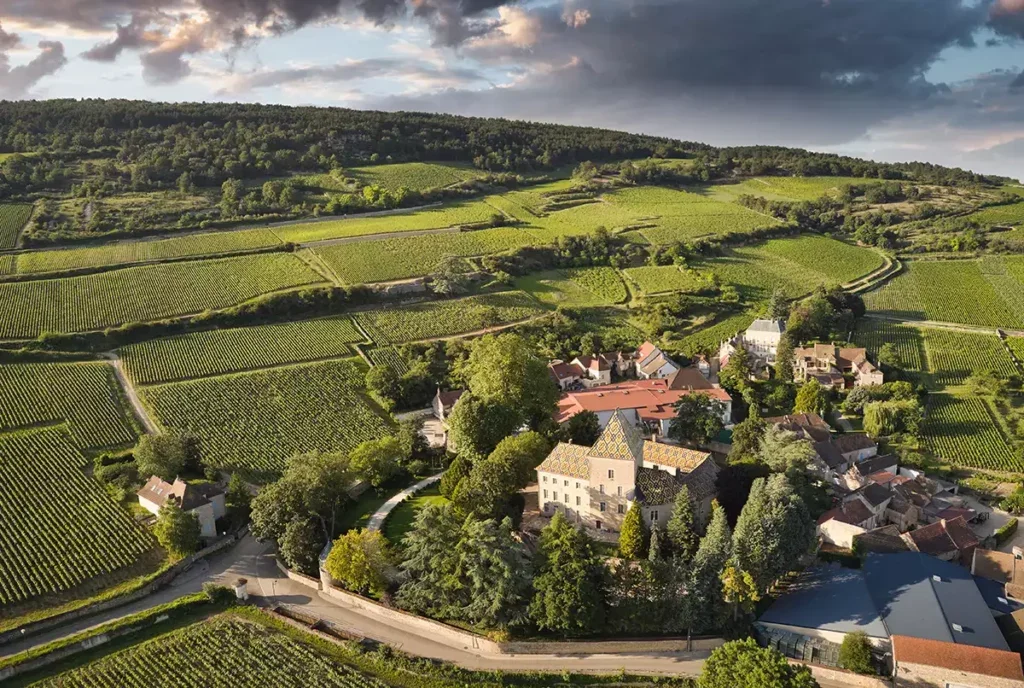
Time to fulfill its unique historic potential?
Regional wines are a producer’s calling card and generally have good volume and availability. “Burgundy is expensive and difficult to buy, and at Domaine de l’Arlot we have many monopolies and grands crus,” observes Géraldine Godot, “so it’s increasingly important now to have a wine with a good position for quality and price. It is why more and more producers want to plant in the Hautes-Côtes.” Anne Gros remarks, “It is my opportunity to connect with new people and show my wine, even though it costs me a lot to produce, as it is planted at 10,000 vines per hectare.”
“We had no regional wine to offer customers,” says Caroline Lestimé, who began the Hautes-Côtes Chardonnay project against the wishes of her father: “I had to fight for it”—which is why she labeled Sous Eguisons under her own name from 2007 until the current vintage.
For producers located in the Côte de Nuits, there is the added advantage of offering a white wine to customers. Jean-Nicolas Méo remarks, “It is very significant to have a white in our portfolio. It gives us an experience with Chardonnay in the best white-wine region in the world. A white Hautes-Côtes de Nuits is not that frequent. Mimicking Côte de Nuits and Côte de Beaune, people expect Hautes-Côtes de Nuits to be red.”
From another perspective, purchasing fruit from the Hautes-Côtes is a cost-effective and practical way for new micro-négociants, such as François and Julien Millet, to build their portfolios and establish a reputation, when compared with the high price and scarcity of fruit from the Côte d’Or. The Millets have some pretty wines from Segros, west of Nuits-St-Georges. To put price in context, Thibault Marion tells me that the cost of Hautes-Côtes de Beaune grapes is “about one third that of village Volnay and slightly more expensive than Bourgogne from the Côte d’Or.”
Meanwhile, Laurent Delaunay has grander ambitions. He hopes to become a reference point for Hautes-Côtes wine. “Most négociants have emblematic wines, produced in volume, on which you can develop your image. We are the only négociant based in the Hautes-Côtes.” He intends to expand his portfolio of five Hautes-Côtes de Nuits, partly through purchasing some vineyards over the next four years.
But he is by no means the only one prospecting for vineyards to rent, buy, or plant in the Hautes-Côtes. Christian Seely is on the prowl for AXA and Arlot. So, too, is Jean-Michel Chartron, who says “I will expand there when I can. Now I need to buy 50hl of wine from the Hautes-Côtes, but I would like to find land to have vines. On the Hautes-Côtes, it is affordable to buy land and to make an affordable wine. The price of the land is nothing by comparison with the Côte d’Or. So, for young vignerons who are looking for land, it is affordable and available, while for established domaines, we are looking for good value. We started making wine in the Hautes-Côtes in 1998—the same strategy as investing in Rully or St-Aubin in the early ’90s, when there was less competition and land was easier to find. Even in the Chalonnais now, it is difficult to buy.”
He estimates the current price of Hautes-Côtes at €3,000 per ouvrée, or €75,000 per hectare. (One ouvrée is 428 sq m, and there are 24 in a hectare.) “That’s not far from regional vines in the Côte d’Or, which cost €3,000–4,000 per ouvrée, while village Puligny is €60,000–70,000, even €100,000 per ouvrée.”
Nicolas Thevenot considers that “even now, the price of land is still connected to the business. One hectare of planted vineyard costs €40,000–100,000. There have been a few transactions recently at €100,000, but more at around €57,000. There are people who don’t want to pay this price on the Hautes-Côtes, which is good for us. We can still offer good value, especially cellar-door. And on the Hautes-Côtes, lots of the cellars are open. We sell about one third of bottles this way.”
If the land is not planted, however, it’s not straightforward to plant: You need planting rights. At Jean-Noël Gagnard, Caroline Lestimé pulled out some vines on the plain below Chassagne in order to plant in the Hautes-Côtes. And in 1990, when Méo-Camuzet wanted to plant the fallow land of Clos Philibert, which had been passed down through the family, Jean-Nicolas recalls, “My father bought some planting rights. At the time, it was still possible to transfer from one region to the other. Ours came from the Loire. And I also benefited from a donation of about 50 ares [1.2 acres], if my memory serves me well, from the INAO as a jeune agriculteur.”
The latter point was brought up by Claire Naudin, who claims that land in Magny-lès-Villers, which should be rented to young, home-grown vignerons, is awarded to larger producers from outside the village. Listening to Claire, it would appear that all is not harmony on the Hautes-Côtes. She tells me that the growers in the village work together, lending each other equipment or buying it together, even giving each other grapes on occasion when someone loses their crop, but newcomers don’t share the same philosophy of collaboration or work ethic. “All my colleagues here work the land. If you work for Gucci, you don’t carry a Gucci handbag.”
But returning to planting rights, there is a further complication on the Hautes-Côtes. Laurent Delaunay is president of the BIVB, in addition to managing Edouard Delaunay. He tells me that the ODG (Organisme de Défense et de Gestion) has decided to limit planting of all regional vineyards in 2024 to a mere 85ha (210 acres) across Burgundy. He sounded weary. “There is no agreement between growers and négociants. The growers want to limit land expansion, to keep prices high, while the négociants want to increase it, to expand their businesses.”
So, while 50% of land classified as Hautes-Côtes is still unplanted, authorization to plant is severely curtailed. At the beginning of my conversation with Laurent Delaunay, my attention was caught by his observation, “It is time to fulfill the unique historic potential of the Hautes-Côtes.” Quite so… but maybe not quite yet.
When I first began reviewing Burgundy en primeur with the 2004 vintage, many producers considered that their regional wine would be beneath the interest of a wine critic. If I wanted to taste it—which I did, because it’s a good indicator of how a producer managed the vintage—I had to ask. Times have changed. Burgundy had already embarked on its inflationary path by 2012, when Sébastien Magnien’s Hautes-Côtes was first shown in London by Berry Bros & Rudd. “It was one of just two regional wines. There were more Montrachets in the room than Hautes-Côtes,” he exclaims. No doubt the value for money caused quite a stir, and since then, at the sharp end of business in sales, the popularity of Hautes-Côtes wines has grown exponentially as Côte d’Or Burgundy has rocketed to absurd prices.
So, how much will good Bourgogne Hautes-Côtes set you back? Should you be in Burgundy, you can pick up a bottle cellar-door from a good, but lower profile domaine for €16–18. In export markets, however, expect prices from £35 up to £45 for a lieu-dit such as Les Dame Huguettes. These days, even Burgundy’s calling card comes gold-plated.


